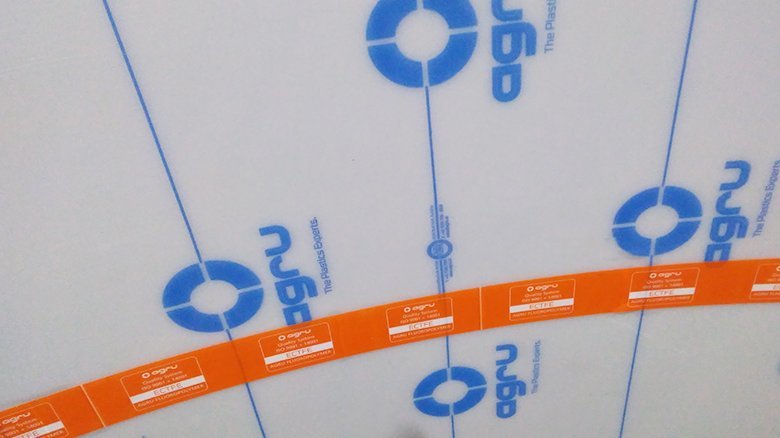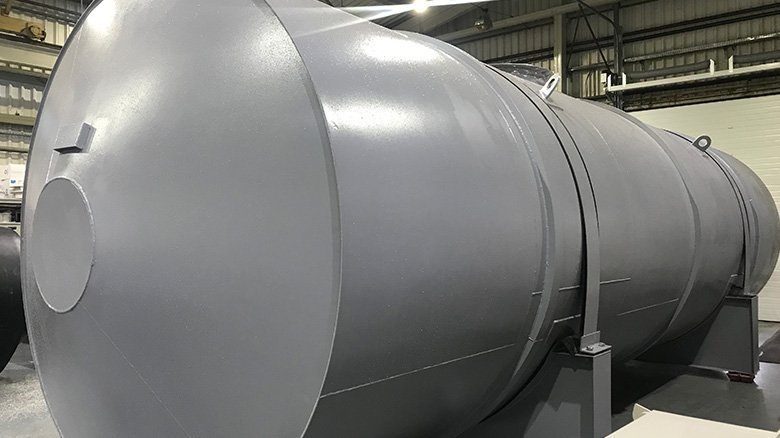Highest chemical resistance is the goal
The horizontal steel tank measures 9740 mm in length and 2760 mm in diameter and is equipped with two hatches and nozzles for filling and pouring. During operation up to 98 % sulphuric acid or 79 % phosphoric acid is stored in the tank. These acids can reach temperatures up to 100 °C. As a storage container for acids, the steel tank must be permanently acid-proof, because base metals oxidise when they come into contact with aggressive media. For this extreme application, an inner lining made of the high-performance plastic AGRU ECTFE sheets was the first choice for corrosion protection. In contrast to conventional rubber linings, the material permanently withstands the most adverse conditions and can be used in a pH range of 1 - 14. Even 98 % sulphuric acid (H2SO4), 70 % hydrofluoric acid (HF), 50 % sodium hydroxide (NaOH) and 36 % hydrochloric acid (HCl) are safely handled up to +120 °C over a long period of time. AGRU ECTFE is also the first choice for highly oxidative applications such as sodium hypochlorite (NaOCl), chlorine gas (Cl2) and ozone (O3).
High-voltage spark test ensures tight welds
PolyTechnika installed 3 mm thick ECTFE sheets in the format 3000 mm x 1500 mm. The welding work with inert gas was carried out in accordance with DVS 2207-3 and electrical spark testing was used for weld seam testing. The necessary testing device emits high voltage to the weld seam via an electrode. In case of leakage, a spark flashover occurs between the testing device and the steel container, which is visible and audible. This test method is based on the principle of gas discharge when high voltage is applied to a discharge path. As all welding work proved to be flawless, the container could be handed over to the owner on time.




